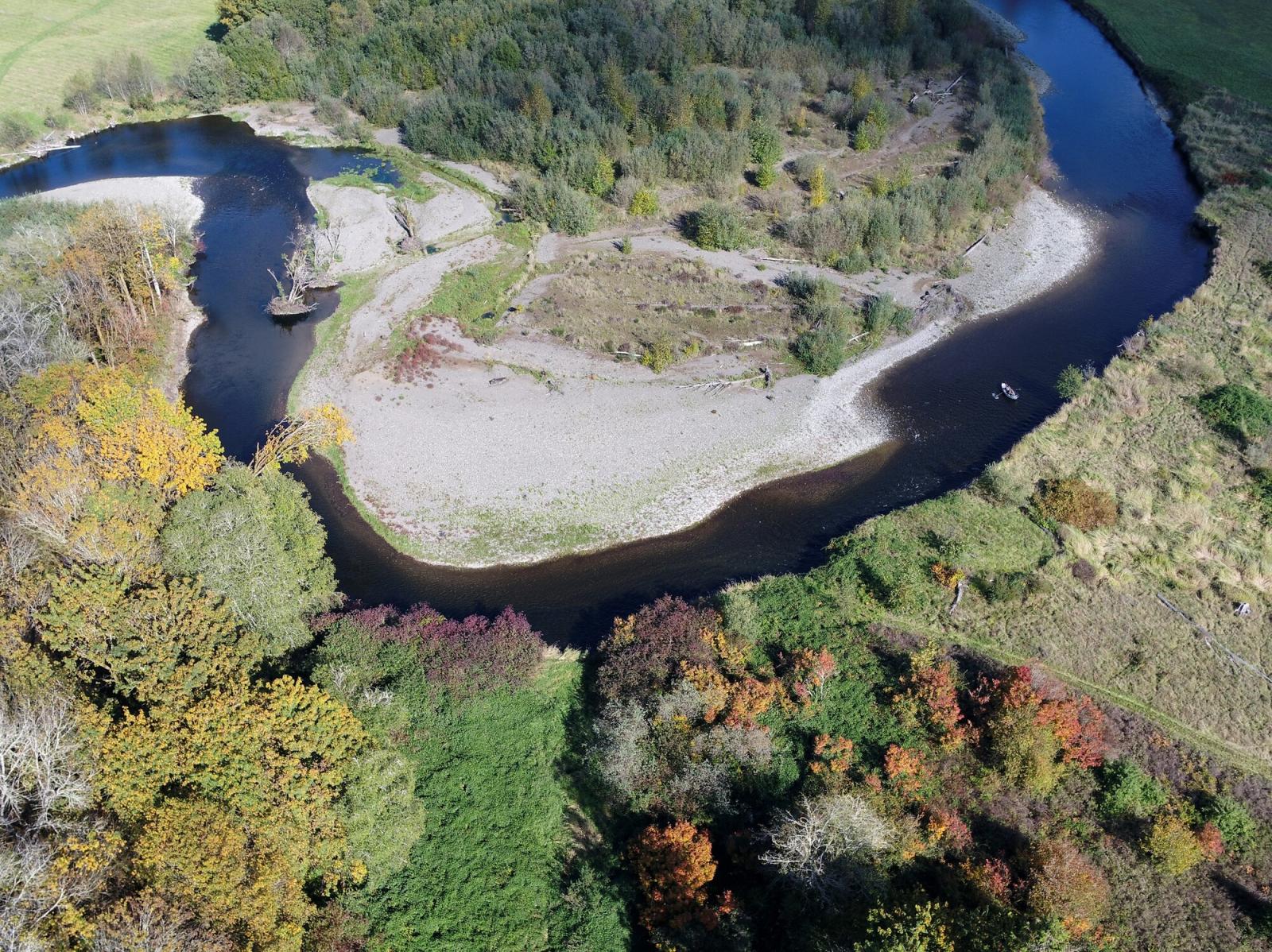Photos
Click to display full size or right-click to save to your device.
ARCHIVED NEWS RELEASE
This document is provided for archival purposes only. Archived documents
do not reflect current WDFW regulations or policy and may contain factual
inaccuracies.
News release June 14, 2021
Joey Murphy, 360-763-2066
MONTESANO – Starting this month, construction will begin to restore habitat in sections of the Satsop and Wynoochee rivers to benefit salmon and other aquatic species. Work will take place on state owned aquatic lands managed by the Department of Natural Resources and private lands in partnership with willing landowners.
From mid-June through mid-September, access to certain areas of the rivers will be restricted for public safety.
- Satsop River: Access will be restricted from Schafer State Park to the West Fork Satsop Boat Launch (River miles 14 to 16.2). People can safely enter the river downstream from the West Fork Satsop Boat Launch.
- Wynoochee River: Access will be restricted from the Old White Bridge to the Wynoochee-Wishkah Crossover Bridge (River miles 7.8 to 9.4). People can safely enter the river for recreation downstream from Crossover Bridge.
The Washington Department of Fish and Wildlife (WDFW) is sponsoring the Satsop and Wynoochee river restoration projects as part of the science-based Aquatic Species Restoration Plan, a key component of the Chehalis Basin Strategy. Designed to rebuild and protect a productive ecosystem that is resilient to the impacts of climate change, the plan prioritizes ecosystems and actions that will have the greatest impact.
“The Chehalis River Basin is the largest river basin in the state where no salmon species are yet listed as threated or endangered,” said Celina Abercrombie, Chehalis Basin Strategy Manager for WDFW. “Large-scale restoration projects like what we are doing in the Satsop and Wynoochee rivers give us an opportunity to protect and restore the Basin’s valuable resources now and for future generations.”
Abercrombie said the Satsop and Wynoochee rivers were a high priority for restoration in the Aquatic Species Restoration Plan because climate change is expected to further degrade existing conditions, causing warmer stream temperatures and more intensive flooding.
To restore aquatic habitat in the Satsop and Wynoochee rivers, crews will reconnect floodplain and off-channel habitats to keep cool water in the rivers when fish need it most, enhance salmon spawning grounds up and down the river, and support overall ecosystem resiliency. The project will also include installing engineered log jams to help stabilize stream banks and streamside plantings that provide shade, insects, nutrients, and wood for the river system. The restoration projects are expected to be completed in 2022.
In addition to the Satsop and Wynoochee river restoration projects, WDFW is sponsoring projects on the Skookumchuck and Newaukum rivers, and on Stillman Creek, a tributary to the South Fork Chehalis River.
Funding for these projects is provided by the Washington State Legislature through the Department of Ecology’s Office of Chehalis Basin.
For more information and construction updates, visit WDFW’s website at wdfw.wa.gov/satsop-wynoochee-restoration.
The Washington Department of Fish and Wildlife works to preserve, protect and perpetuate fish, wildlife and ecosystems while providing sustainable fish and wildlife recreational and commercial opportunities.
